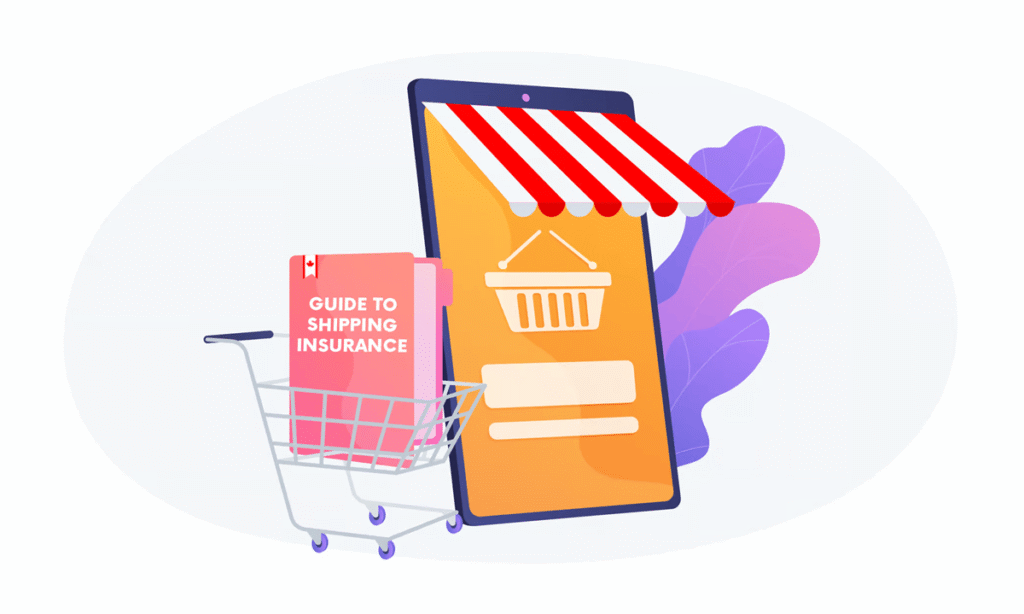In the world of ecommerce and shipping, protecting your goods in transit is paramount. Shipping insurance coverage offers a safety net against various risks, ensuring that your products reach their destination without financial loss.
Understanding the types of coverage available can help you make informed decisions to protect your business and provide peace of mind for your customers.
So, here are the different types of shipping insurance coverage and how they can benefit your operations!
Basic Coverage
Let’s start with the most fundamental type of shipping insurance coverage—basic coverage. Here’s what it usually covers:
Loss and Damage Protection
Basic shipping insurance typically covers loss and damage of goods during transit. This includes items that are lost, stolen, or damaged due to handling mishaps or accidents.
For example, if a package is dropped and the contents break, basic coverage can help recover the cost of the damaged items.
Carrier-Provided Insurance
Many carriers, such as USPS, UPS, and FedEx, offer a certain amount of basic insurance included with their shipping services. USPS, for instance, includes $50 to $100 of insurance with Priority Mail services.
However, this coverage may have limitations, making it essential to understand the specifics provided by each carrier.
Claim Filing
Basic coverage often includes a straightforward claims process, allowing you to file a claim for reimbursement if a package is lost or damaged. This process is typically handled through the carrier’s website or customer service channels.
Additional Coverage
While basic coverage provides essential protection, additional coverage offers enhanced security for high-value shipments. The following are some of its benefits:
Higher Coverage Limits
Additional coverage allows you to insure packages for amounts exceeding the basic limits provided by carriers. This is particularly useful for high-value items like electronics, jewelry, or artwork.
For example, if you’re shipping a laptop worth $1,500, additional coverage ensures that the full value is protected.
Comprehensive Protection
Additional shipping insurance often covers a wider range of scenarios, including damage due to weather conditions, mishandling by third parties, and other unforeseen events. This comprehensive protection ensures that your shipments are safeguarded against a broader spectrum of risks.
Third-Party Insurance Providers
Many businesses opt for third-party insurance providers for additional coverage. Other companies offer customizable insurance plans that can be tailored to your specific needs, providing flexibility and peace of mind.
International Shipping Coverage
When it comes to international shipments, having the right coverage is crucial due to the added complexities and risks involved. Here’s how it contributes to protecting your shipments:
Global Protection
International shipping insurance covers your shipments as they travel across borders, ensuring protection against loss, damage, and theft. This is vital for businesses that frequently ship internationally, where packages are handled by multiple carriers and exposed to various risks.
Customs and Duties Coverage
Some international shipping insurance policies also cover customs and duties. This means that if a package is lost or damaged, the insurance can help recover not only the value of the goods but also any customs fees and duties paid.
Transit Time Variability
International shipments often have longer transit times and more touchpoints, increasing the likelihood of issues. Insurance coverage that includes extended protection for longer transit times helps mitigate these risks, ensuring your goods are covered for the entire journey.
Specialty Coverage
In addition to standard coverage options, specialty coverage caters to specific needs and unique shipping situations. These include the following:
- Perishable Goods: For businesses that ship perishable items like food, flowers, or pharmaceuticals, specialty coverage can provide protection against spoilage or temperature-related damage. This coverage ensures that if your perishable goods are compromised during transit, you can recover the costs.
- Fragile Items: Shipping fragile items requires extra care, and specialty insurance can cover breakage or damage that might not be included in standard policies. This is crucial for businesses dealing with delicate products like glassware, ceramics, or artworks.
- High-Risk Destinations: Some regions or countries have higher risks of theft or damage. Specialty coverage can offer enhanced protection for shipments to these high-risk destinations, ensuring your goods are insured against the increased risks associated with specific locations.
Learn More About Shipping Insurance Coverage for Businesses
Understanding the different types of shipping insurance coverage available is essential for protecting your business and ensuring customer satisfaction.
From basic coverage that handles common shipping mishaps to specialty coverage options, each type plays a vital role in safeguarding your shipments. By choosing the right insurance coverage, you can mitigate risks, reduce financial losses, and provide a better experience for your customers.
Protect your shipments and ensure peace of mind with Swipe’s shipping insurance services to enhance your shipping strategy and ensure long-term success!



 Swipe Team
Swipe Team October 10, 2025
October 10, 2025 4 mins
4 mins 



